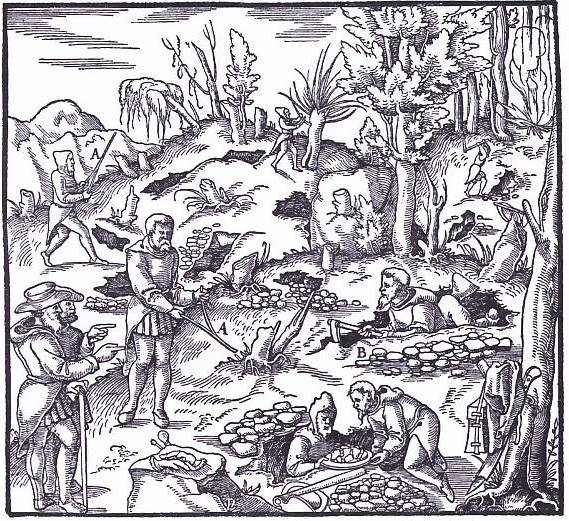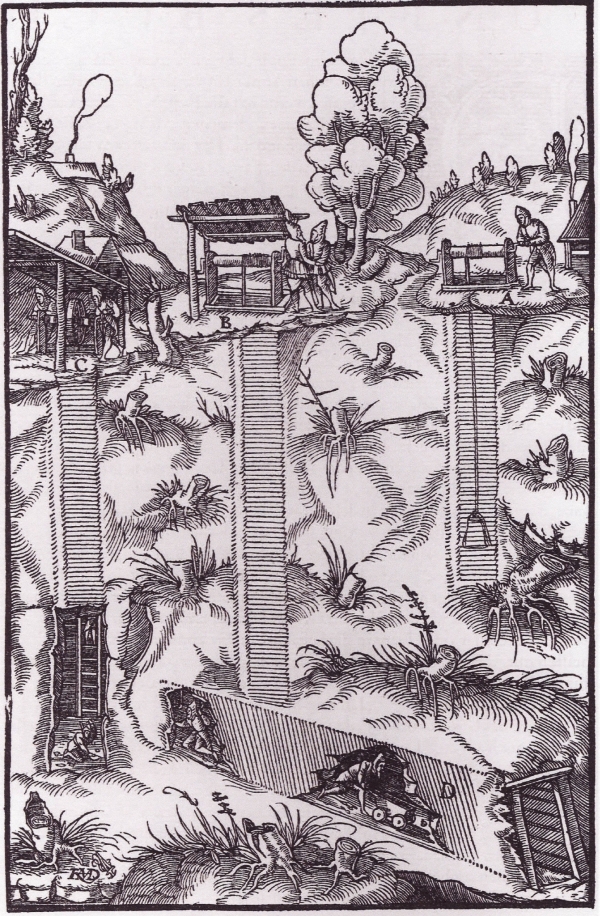Mining at Eisernhardt and in Eisern in general was first documented in 1465. As of 1674 Eisernhardt mines had individual names. Before, they were distinguished by their owners’ names only and so they were named for instance ‘…of Johannes Jung, miner of Ißern (=historic name of Eisern) at the mine of Eisernhardt…’ This makes it particularly difficult to trace back the history of individual mines. Mines that operated over a long period of time often kept their names, often just changing the spelling. Mines with interrupted operation times might be completely renamed.
Thinking of a mine nowadays, we usually imagine shaft towers, roasting furnaces and the buildings of surface installations. However, the mines in times of Old Mining until the mid-19th century were usually mall-sized or tiny workshops with two to ten workers. Wherever an ore lode appeared at the surface the miners of those times dug in fault pits and narrow shafts, following the ore. Nowadays you notice nothing but the deepening of a former shallow hollow, a ditch, a fault pits or a reel shaft.

(Source: De re Metallica of Georgius Agricola 1494 – 1555)

(Source: De re Metallica of Georgius Agricola 1494 – 1555)

Merely a ‘hole’ in the ground, but formerly an independent mine


